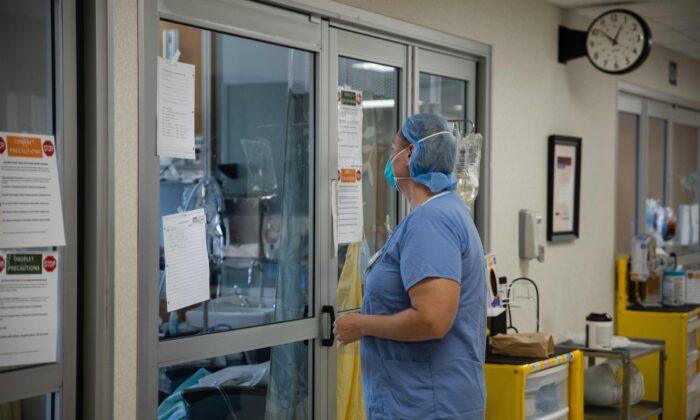Several more hospitals have implemented mask mandates in recent days—despite recent federal data showing that COVID-19 hospitalizations have declined.
This week, several New Jersey hospitals and care facilities confirmed that mandates would be returning. That includes facilities operated by Hackensack Meridian Health.
“This decision was made due to an increase in COVID-19 prevalence in these hospitals, facilities and communities,” Hackensack Meridian Health said in a statement. “The health and safety of our team members and patients has always been and continues to be our number one priority.”
“Since the start of the pandemic, COVID-19 cases have spiked in late fall. The simultaneous circulation of three respiratory viruses contributes to a seasonal rise in sick days from work and school, and increased hospitalizations and deaths,” Marin County health officials said.
Their orders start Nov. 1 and will last until April 30, 2024, the officials said, citing recent increases in COVID-19, influenza, and other respiratory viruses.
“We are issuing the health order today around masking for high-risk facilities, health care facilities specifically,” Ms. Roth said. “So again, masking in hospitals, masking in skilled nursing facilities, masking in high-risk facilities.”
Since August, several hospitals across the United States have reimplemented mask mandates, although some have only made face coverings mandatory for employees—not patients or visitors. A smaller number of schools and some private businesses have also made masking mandatory in recent weeks, sparking fears of a repeat of COVID-19 mandates that were imposed over the past several years.
Several hospitals in upstate New York, Massachusetts, and California implemented a mask mandate in August. An elementary school in Maryland also recently made masking a requirement for a kindergarten class due to what officials said was a rise in cases of the virus.
Hospitalizations Drop
Data provided by the U.S. Centers for Disease Control and Prevention (CDC) show that across the United States, hospitalizations were down 4.3 percent for the week ending Sept. 16. The number had been increasing since July, but the CDC’s historical trends suggest that hospitalization numbers are relatively low compared with previous seasonal increases of COVID-19.The latest CDC figures also show that emergency department visits are down 19.3 percent and test positivity is down 1.6 percent for the same week. Deaths are up by about 12.5 percent, the data show.
And last month, Dr. Shira Doron, chief infection control officer for Tufts Medicine, said that the recent “upswing is not a surge; it’s not even a wave.”
“What we’re seeing is a very gradual and small upward trajectory of cases and hospitalizations, without deaths really going along, which is great news,” the doctor added.







